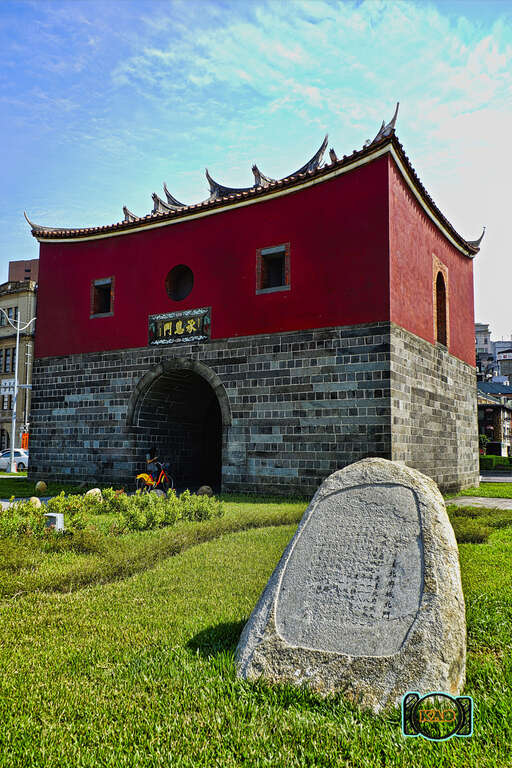Beimen Cheng'en Gate Introduction
The Taipei City Wall has a total of five gates: East Gate (Jingfu Gate), West Gate (Baocheng Gate), South Gate (Lize Gate), Little South Gate (Chongxi Gate), and North Gate (Cheng'en Gate). These gates were built during the Guangxu era of the Qing Dynasty under Liu Mingchuan's leadership to encourage merchants to invest in and build houses within Taipei City, forming streets and stimulating development. The North Gate, also known as Cheng'en Gate, faces north and signifies "receiving the grace of heaven." It is the only remaining Min Nan-style architectural gate in Taipei. Its strategic location serves as a landmark in the "West District" of old Taipei City, and during the Qing Dynasty, it was the core gateway leading from "within the city" to "Dadaocheng." Therefore, the West District gate plan centers on the North Gate while connecting surrounding historic sites such as the Japanese colonial "Ministry of Railways," "Taipei Post Office," "Osaka Trading Company," "Mitsui Warehouse," as well as Qing Dynasty era sites like "Butai Street Western-style Buildings" and "Machinery Bureau," creating a contextual historical attraction in a "plane-shaped" manner. The square in front of Taipei Station has been designed as a national gateway image, linking the axis from Taipei Station to the North Gate. In recent years, as cultural heritage preservation concepts have risen, the North Gate, originally scheduled for demolition, has been preserved, making it the only ancient city gate that retains its Qing Dynasty appearance among the five gates. It is one of Taiwan's most precious national monuments and serves as a historic testament to the early defensive functions of the city.






























